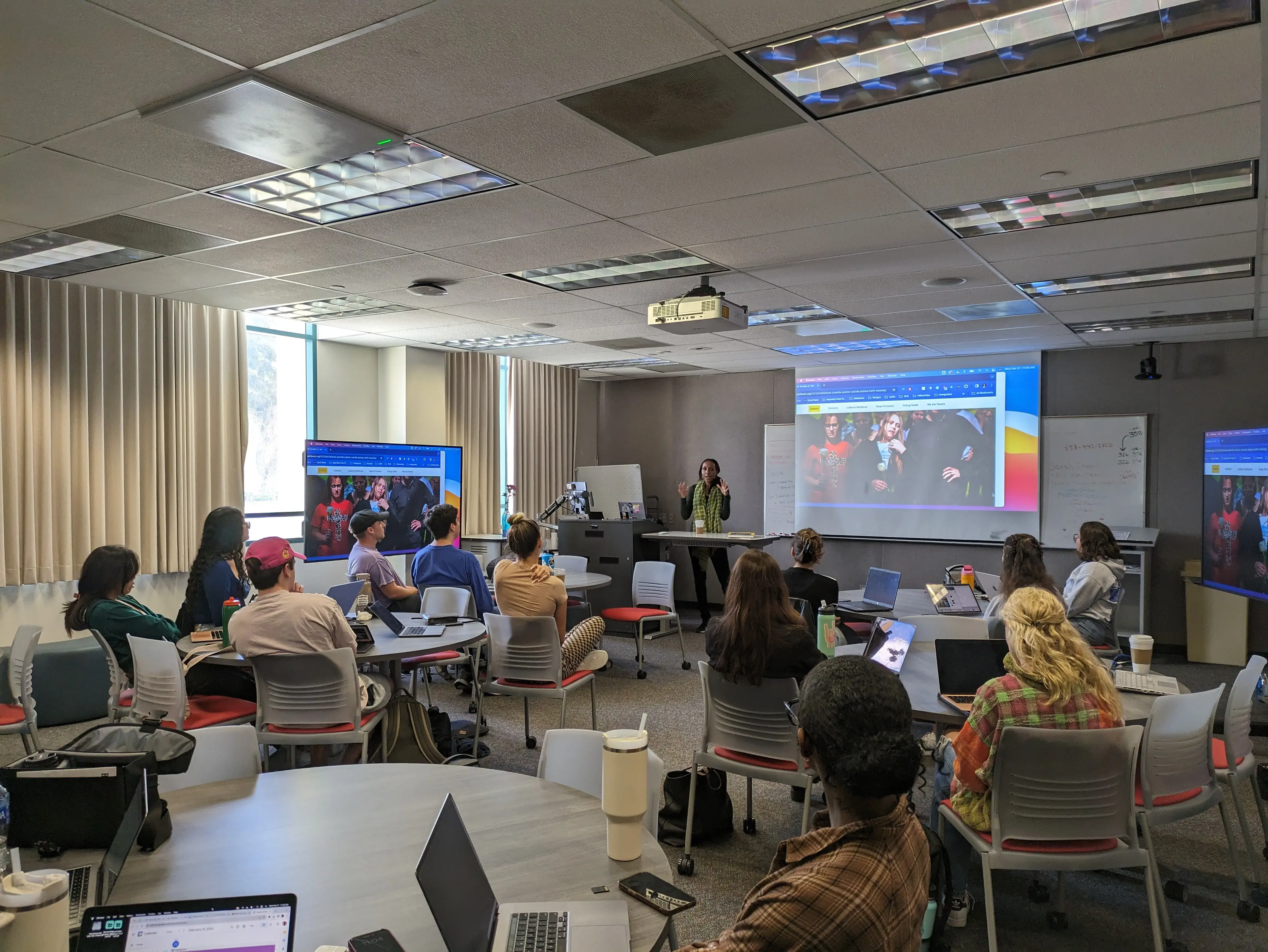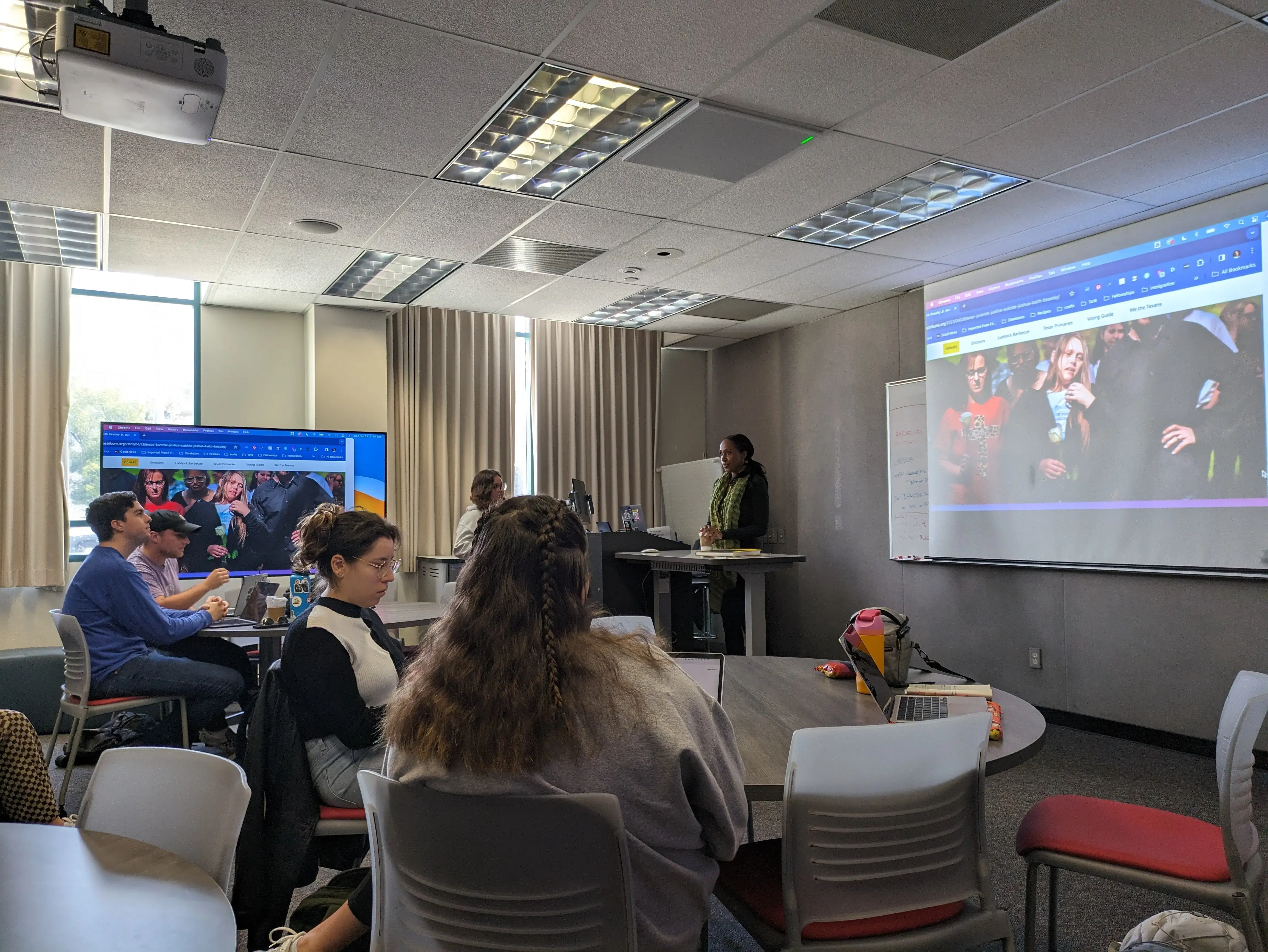
Editor's Note: Graphic details could be disturbing to some readers. For 24/7 mental health support in English or Spanish, call the Substance Abuse and Mental Health Services Administration’s free help line at 800-662-4357. You can also reach a trained crisis counselor through the Suicide and Crisis Lifeline by calling or texting 988.
Pulitzer Center grantee Lisa Armstrong saw leaning shelters made of wood and zinc sheet roofs when she climbed the fence around her friend’s house as a child in Nairobi. Armstrong told an audience at San Diego State University that, at the time, she thought that the “adults [never] look[ed] over [the fence], that’s why there are no solutions.”
She realized later that adults didn't need to climb the fence to look over it. They looked away from injustice.
“I want people to see,” she said.
On February 21, 2024, at San Diego State, a Pulitzer Center Campus Consortium partner, Armstrong presented her investigative reporting on U.S. juvenile incarceration.
Her latest project, Trouble in Texas, was supported by the Pulitzer Center. It follows Joshua Beasley, who was imprisoned at age 11 for kicking a school safety officer, through the Texas Juvenile Justice Department. In March 2023, Beasley died by suicide not long after the department moved him to an adult facility. Many young incarcerated people harm themselves in order to leave their cells or make contact with the world outside, according to Armstrong’s reporting.
Armstrong spoke more to the complicated relationship between reporting and impact: “As a journalist, part of what I struggle with personally when I think about what I do is that I’m often writing about people’s trauma […] and yes there can be a positive outcome, but I would rather he still be here.”
After her work was published in The Texas Tribune, the Texas House passed a bill that raises the age at which a juvenile court may exercise jurisdiction over a child from 11 to 13. Representative James Talarico made direct reference to Joshua's story.
“I often cover traumatic things after the fact,” said Armstrong, “but this is something I watched unfold in real time.”
Armstrong said she resolves the power imbalances of reporting with humanity: “[I] connect with people as a human first. I explain to people what I’m doing, how I’m doing it, how long I’m going to be in their lives.”
Armstrong also said, “I tell people that if I ask them something they don’t want to answer, they don’t have to answer.”
This isn’t a cure-all. Some vulnerable people may still be hurt when Armstrong must verify their stories with people who they say have hurt them.
“For any story I do, I can’t just focus on ‘here is this poor person who is incarcerated,’ because unless they didn’t do whatever it is they’re locked up for, they did something and harmed someone, and for me […] it’s really important to talk to people about what they did to see what they think about it, how did they end up in this situation, and then also talk to whoever has been impacted by the crime,” she said.
Armstrong fielded questions from journalism students and faculty about her process during and after reporting.
“Before I pitch anything, I report,” she said. “I think of freelancing as a business.” People’s stories motivate her narratives, and their “complexity” demands readers’ and viewers’ scrutiny, she said.
In journalism and justice, Armstrong asked her audience to avoid holding people “in one moment in time without thinking about what has come before and what has come after.”
Finally, she encouraged students to develop support structures and wellness practices for themselves. “We’re not therapists,” she said. “I don’t want to leave someone exposed [after an interview].” “Boundaries” take on a new importance in emotionally wrought feature reporting.
In addition to giving a keynote address, Armstrong spoke with a photojournalism course and a journalism capstone course. She also visited Centinela State Prison to speak with incarcerated students in a Bachelor of Arts program offered by San Diego State University called VISTA (Valuing Incarcerated Scholars Through Academia).
A student said Armstrong's talk about freelance journalism was “inspiring.” One wrote that they understood now that they had to focus on the “person” in addition to “the structure or policies in place.”






